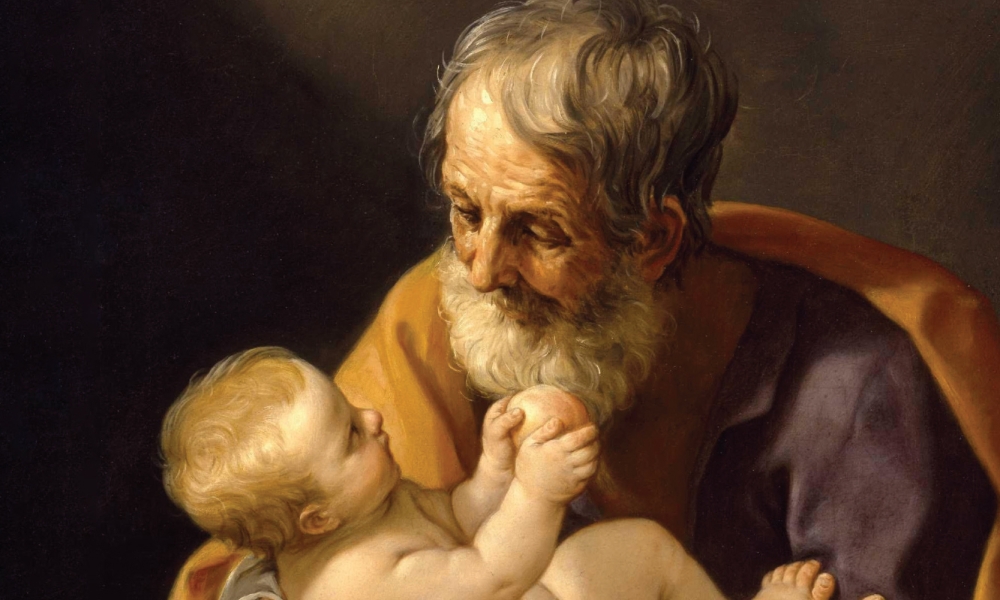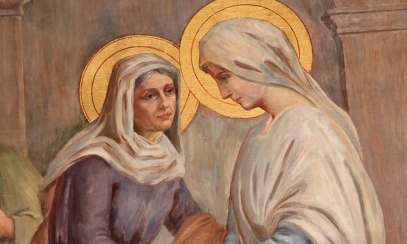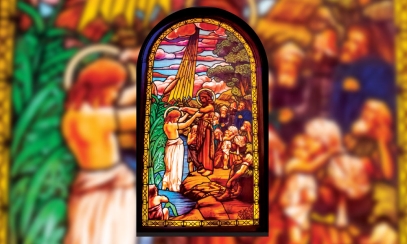
The Heart of Joseph: A Contemplation on the Nativity
In the 1500s, two shipwrecked Franciscans sought the help of St. Joseph in their distress off Flanders. He appeared to them and encouraged them to promote devotion to his seven sorrows and seven joys. These consist of:
In the 1500s, two shipwrecked Franciscans sought the help of St. Joseph in their distress off Flanders. He appeared to them and encouraged them to promote devotion to his seven sorrows and seven joys. These consist of:
- Joseph’s concern about Mary’s pregnancy / Angel’s joyful message of the Incarnation
- Poverty of child’s birth / Wise men and angels adore the infant Jesus
- First blood shed at Jesus’ circumcision / Having the honor of naming Jesus
- Simeon’s prophecy of persecution / Knowing the promise of mankind’s salvation
- Flight Into Egypt / Idols of Egypt fall at Jesus’ feet
- Perilous return to Bethlehem / Life with Jesus and Mary
- Loss of Jesus in Jerusalem / Finding Jesus in the Temple
One of these concerns was expressed poetically in lyrics from a hymn by Dan O’Reilly, of St. Michael Church in Murrells Inlet, called “The Heart of Saint Joseph”: “Great was your sorrow in Bethlehem’s stable, too humble a home for the birth of a king / Great was your joy seeing shepherds adore him as wise men brought tribute and angels did sing / Heart of St. Joseph, blessed by your son, lead us to Jesus when our work is done.”
Watch a video presentation of the article, produced by “To Thee O Blessed Joseph Apostolate.”
There is much symbolism in the circumstances of Jesus’ birth. Bethlehem means “house (of) bread” and the child was placed in a manger, a feeding trough. This introduces St. John’s Gospel teaching on the bread of life, alluding to the Eucharist (Jn 15). The presence of shepherds shows Christ’s future as the Good Shepherd, who knows and leads his flock to green pastures and even gives his life for his sheep (Jn 10).
There are two epiphanies presented, first to the Jewish people represented by shepherds, and the other to gentiles, represented by the Magi who were philosophers. They studied nature and its celestial phenomena, and as St. Paul tells us, nature reveals certain divine attributes easy for mankind to identify (Rom 1:19-20). The mysterious star stopped guiding the Magi because God’s revelation, given through the Jewish people, was now meant to lead them.
The Magi are referred to as wise men, which reminds us of an important category of biblical literature about divinity and virtue. They were divinely guided to supreme wisdom incarnate. They have often been portrayed together with the shepherds at the stable in Bethlehem. This is not chronologically accurate. A careful study of the original Greek indicates that some time separated the two epiphanies. When the Magi found the child with his mother, they were not in a stable but in a house. The age of the child in Greek word usage meant a toddler, not a newborn infant (this also easily explains Herod’s choice of two years for his decreed massacre).
Mary’s contributing presence is commemorated in another of O’Reilly’s hymns, “Mother of Joyful Hope.” “Mother of faith and promise, with Israel of old / You waited for the Savior the prophets’ cry foretold / Until at last the Word Incarnate came / To bring the world salvation / And healing in his name.”
And now, our role in Jesus' birth is to proclaim — in the words of O’Reilly’s hymn “The Holy Face of God” — “Behold the Holy Face of God / The joyful Face of a newborn babe / Sent here to save our fallen race / Behold his holy Face / The sacred Face, the human Face, the holy Face of God!
Father Stanley Smolenski, spma, STL, MTh, is a canonical Baptistine hermit and the co-founder and director of the diocesan Shrine of Our Lady of South Carolina — Our Lady of Joyful Hope in Kingstree. Email him at ssmolenski@charlestondiocese.org.



